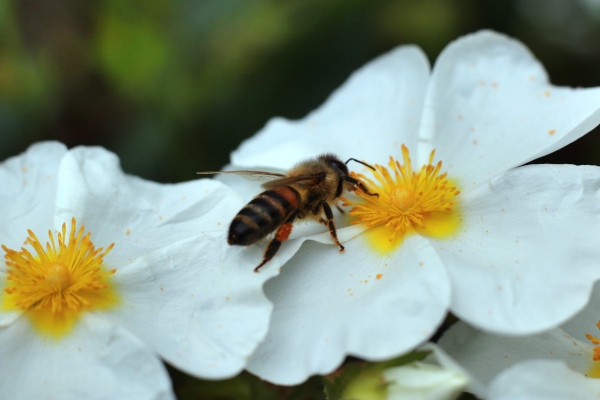How to grow Cistus
Also known as rock rose or sun rose, cistus is a genus of flowering evergreen shrubs from dry, stony or rocky places throughout the Mediterranean. They are valued for their extreme drought tolerance (often surviving where other plants won’t), and profusion of crinkled, papery flowers in summer. Though each bloom lasts only one day, great quantities are produced in continuous succession from June until August.
Despite its hot, dry origins, cistus grows remarkably well in the UK, providing it is given full sun, very well-draining, low nutrient soil, and shelter from the worst of our winter weather. Cistus is an easy-to-grow shrub with a bushy, spreading habit, and an ability to withstand extreme heat as well as salty soil and coastal conditions. Relatively short-lived, it starts to look past its best after about 10 years, becoming leggy and sprawling with dieback in the centre. As cistus seldom regrows from a hard pruning cut, it is best replaced with a fresh, new plant once this stage is reached. Plants flower well from an early age, so there is no long wait for blooms.
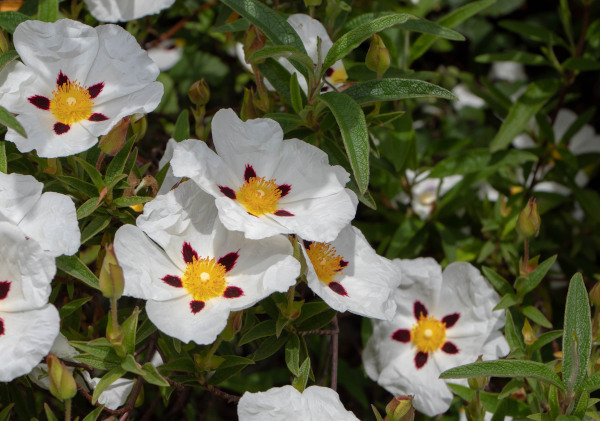
Key Information
Position
Soil Conditions
Hardiness

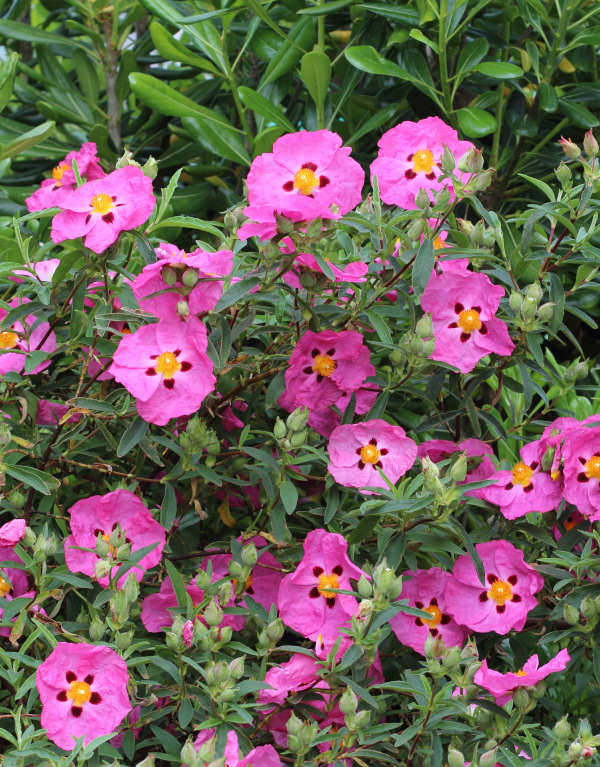
Where & when to plant Cistus
Position - A sunbaked, sheltered spot out of cold, harsh winds. Avoid shade.
Soil - Thrives in nutrient-poor, stony or rocky soil. Avoid heavy, wet, or overly fertile soil, as this produces leggier, less robust plants with fewer flowers.
Flowering Period - Summer
Hardiness - Hardy in the average UK winter. Rated H4, meaning able to withstand temperatures dipping to between -5°C and -10°C.
Horticultural Divisions
There are many species of cistus and even more cultivated forms, from the low groundcover Cistus salviifolius ‘Prostratus’ (30cm) to the towering upright C. ladanifer (2.4m) and everything in between. In terms of hardiness, C. x cyprius, C. x hybridus, and C. laurifolius are said to tolerate the lowest temperatures and are good choices for colder, northerly regions. C. ladanifer and its cultivars are at the more tender end of the scale.
Cistus usually comes as a pot grown plant. This means it can be planted at any time of year, though best results are achieved from a spring planting, which gives it time to settle in before facing the challenges of a UK winter. Planting can also be carried out in summer, though be prepared to water regularly. Autumn is an option if you live in a milder part of the country (generally the south and coastal areas) and can offer extremely free-draining soil.
Cistus enjoys a sunny, south-facing spot which is protected from northerly and easterly winds. Planting against a wall or building is a good idea, or in a sheltered gravel garden, courtyard, coastal garden, or sunbaked bank.
Cistus dislikes being moved, so take your time to choose a ‘forever’ spot when planting. Give it plenty of space too – it will suffer permanent dieback if crowded out by other plants.
When it comes to container-growing, success may be had for the first year, though after this we’ve found cistus quickly runs out of steam. Repotting into fresh compost each spring may help prolong matters, though in truth this plant much prefers the open ground.
How to plant Cistus
- For planting in the ground, prepare the area by removing any weeds. Whilst we usually recommend adding well-rotted organic matter, cistus thrives where nutrients are low, so on this occasion loosening the soil slightly with a fork is sufficient soil ‘prep’.
- Water the plant well and allow to drain.
- Dig a hole twice the size of the root-ball.
- Place the plant in the hole, ensuring the top of the root ball sits level with the surface of the soil. Too low and the plant may rot, too high and the roots can dry out.
- Backfill with soil and firm in gently with your foot.
- Soak well with water.
- Mulch around the base with horticultural grit. Organic matter should be avoided for the reason stated above, though a grit mulch is useful for both supressing weeds and reducing the likelihood of water pooling around the plant (bad news for cistus).
- For planting in containers, first choose an appropriately sized pot just a few centimetres larger than the rootball. Ensure there are plenty of drainage holes.
- It can be worth filling large containers in situ to save yourself the trouble of moving once full.
- Water the plant well and allow to drain.
- Use a good quality potting compost with a generous amount of horticultural grit mixed in (aim for a grit content of about a third). If there is already fertiliser in the compost, there is no need to add any more. If not, add a very small amount (about a quarter of the recommended dose).
- Start by partially filling the pot with compost; enough so that when placed on it the upper surface of the root ball is about 3cm lower than the top of the pot.
- Infill all the space surrounding the root ball with compost, firming down with your fingers then adding a little more so the plant is held tight.
- Pick up the container (if you can!) and lightly tap on the potting bench or ground a few times to help further settle the compost around the plant.
- Soak well with water.
- A mulch with horticultural grit will look attractive and help to prevent a ‘cap’ or crust forming on the top of the compost (something container plants can suffer due to the artificial nature of their watering).

What to plant with Cistus
In the wild, cistus grows on thin, poor soil alongside lavender and broom. In the garden, other similarly tough-as-nails companions may include perovskia, eryngium, gaillardia, osteospermum, and delosperma.
If you would like any further planting ideas or growing advice for your cistus, please contact our friendly and knowledgeable Customer Care Team - we will be more than happy to help you.
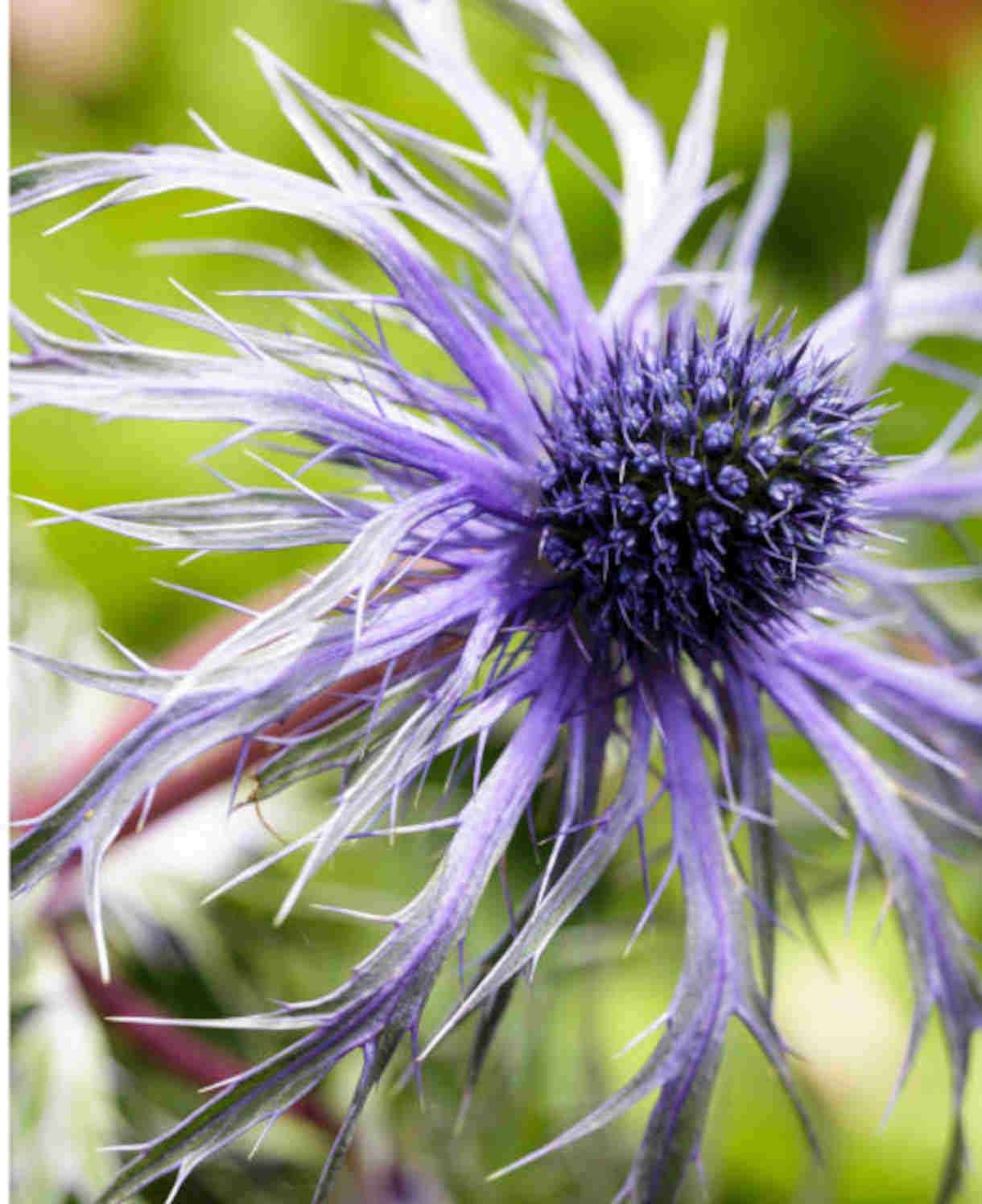

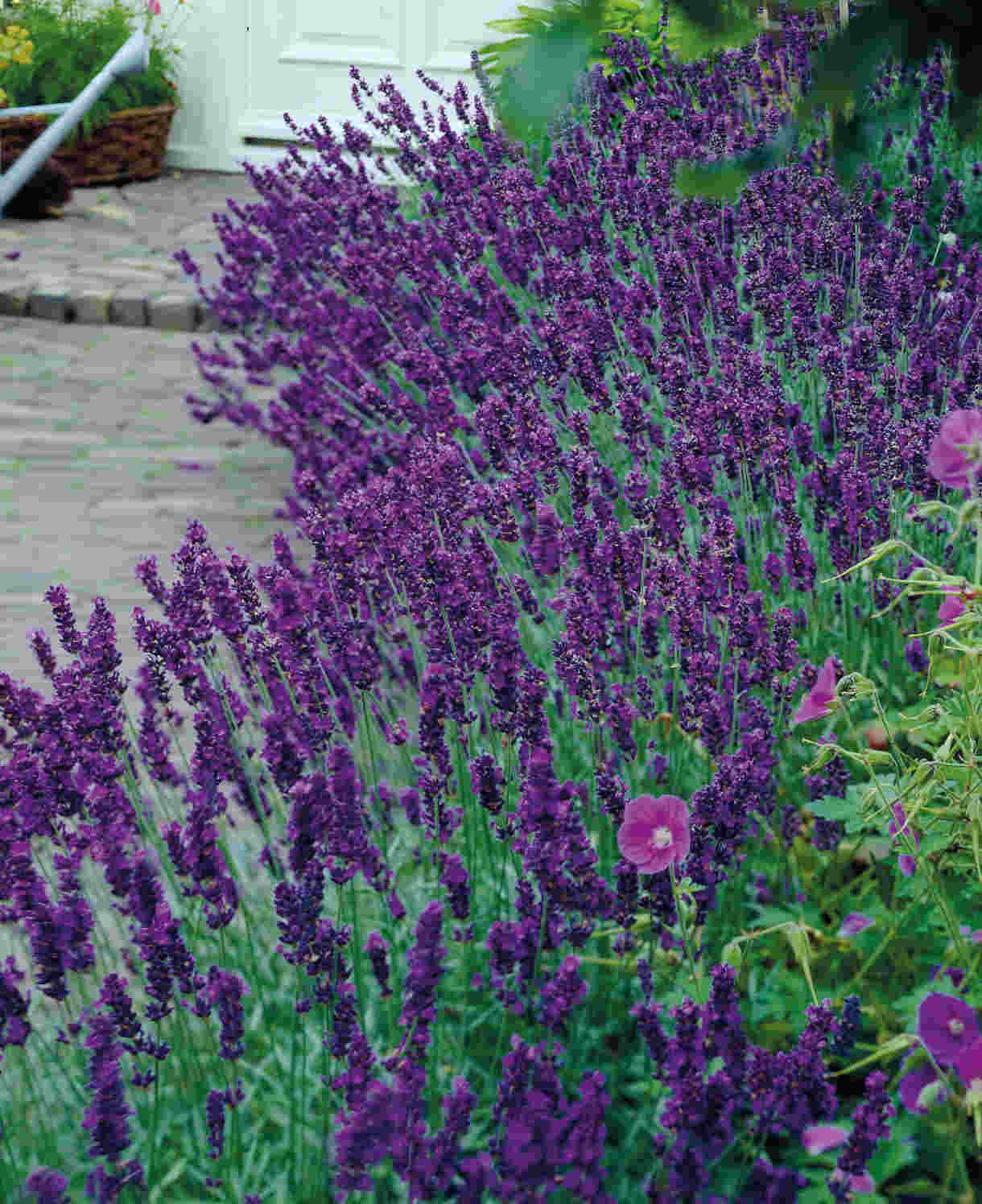
How to care for Cistus
Pruning and Deadheading
The flowers of cistus shed and replace themselves naturally, meaning there is no need for deadheading.
When plants are young, pruning back the leading stem and any strong sideshoots by two thirds will encourage the formation of a bushy, well-balanced shape. Do this in spring.
Once established, cistus is best left alone apart from the removal of dead, diseased, or damaged stems, again in spring. As is the case for most Mediterranean shrubs, cistus is unlikely to regrow from a cut into old wood, and once it becomes scruffy and tired looking, the best approach is to replace with a new plant. Fortunately, cistus comes very easily from cuttings (see below), which it’s worth taking after about 8 years to ensure decent sized replacements.
Watering
Water your cistus regularly for the first year or so in the ground, while its roots become established. After this it is extremely drought-tolerant and largely self-sufficient in all but the most prolonged periods of hot, dry weather. When watering, avoid overdoing it by allowing the top few centimetres of soil to dry out each time. Wiggle your finger down into the soil to check this.
If you are growing cistus in a container, aim for infrequent big soakings (rather than little and often), allowing the compost to almost fully dry out in between.
Feeding
Cistus is adapted to growing in nutrient-poor soils and requires no additional feeding or mulching when grown in the ground. If growth appears weak and you feel your plant could do with a boost, work a balanced granular feed into the top few centimetres of the surrounding soil in spring. Do this sparingly and as a last resort, however, as overpampered cistus can become unattractive, bare, leggy plants with a reduced lifespan compared to those grown in ‘harder’ conditions. Treat them mean, keep them keen!
In a container, good quality potting compost with some slow release fertiliser granules mixed in should be enough to support a year’s worth of growth. Then the following spring, either repot into a larger pot; scrape off the top 5cm of compost and replace with fresh; or – even better – plant out into the open ground.
Cold Protection
When grown in the right spot (shelter from cold winds, good drainage), cistus should be hardy enough to withstand winter throughout most of the UK without the need for additional protection. Where winters are particularly harsh (more northerly or exposed gardens), it can be worth protecting young shrubs with a fleece jacket or similar whenever a cold spell is forecast.
Like all plants, those grown in containers can be more vulnerable to the cold. Wrapping pots with hessian or fleece is a useful winter habit to establish. As well as insulating roots, this protects the pot from cracking.
Pests and Diseases
Cistus is considered trouble free.
How to propagate Cistus
Cistus is one of the easiest plants to propagate by cuttings. Softwood cuttings taken in late spring to early summer are quick to root (around 4 weeks) and can be planted out the same year, or grown on in pots for a couple of years to make good-sized replacements for existing plants.
- Selecting healthy, non-flowering shoots, snip cuttings off the plant. If possible take a longer piece than the ideal eventual length of around 10cm (to allow for trimming).
- Put them in a plastic bag straight away to prevent drying out.
- Fill several pots with a well-draining compost mix.
- Trim the end of the cutting to just below a node (point at which leaves grow).
- Remove lowest leaves and soft tip, leaving 2-4 leaves.
- If the remaining leaves are large, cut them in half with a sharp knife (to reduce water lost through transpiration).
- Insert the cuttings into the compost and water lightly. Several cuttings can be put in the same container if there is enough space to do this without them touching.
- Place in a greenhouse or propagating unit if you have one or covered with a plastic bag on a windowsill if not (out of direct sunlight).
- Keep the cuttings misted and occasionally watered until they root. You will know this has happened when roots emerge out of the bottom of the container.
- Gently remove rooted cuttings and pot them into individual pots. Grow on in a cool, protected environment such as an unheated conservatory, greenhouse, or cold frame.
You can also take semi-ripe cuttings in midsummer to early autumn. These are slower to root and will need to be overwintered in a coldframe or unheated greenhouse before being ready to pot up and grow on the following spring.
* Many plants carry Plant Breeders Rights and cannot be propagated for commercial purposes.
Common Cistus questions
- Is cistus beneficial to wildlife?
With a summer-long continuous supply of flowers, cistus is a valuable source of nectar for pollinators. - Can cistus be grown in pots?
In the short-term, yes, though long-term plants are likely to struggle. See ‘When and where to plant cistus’ section for more information. - Can cistus grow in shade?
No, this is a sun-loving plant from open, light-drenched places in the Mediterranean. More shade-tolerant alternatives include daphne, philadelphus, clethra, hebe, deutzia, and fuchsia. - Can I grow cistus from cuttings?
Yes, this is very easy with an unusually high success rate. See ‘How to propagate cistus’ for more information.
